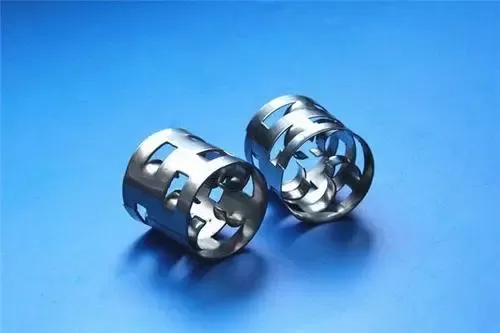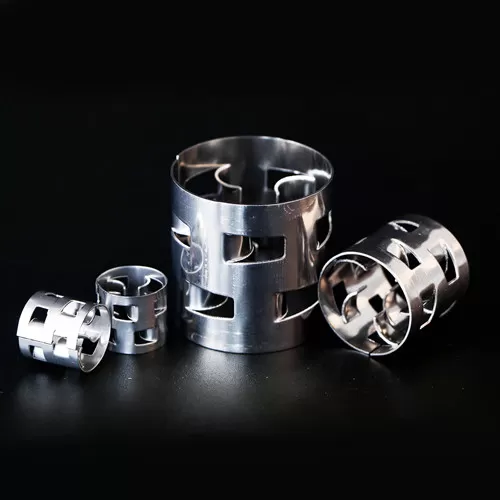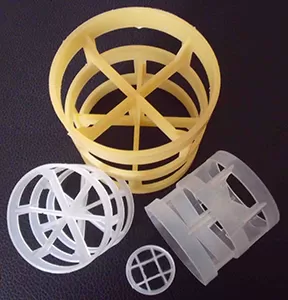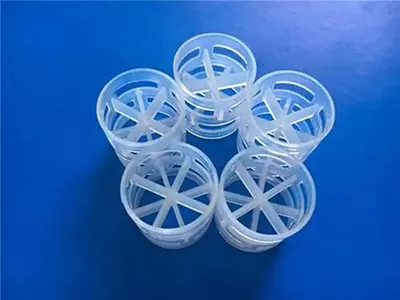Analysis of the Core Function of pall Ring packing Material
As a widely used mass transfer component in the fields of chemical engineering and environmental protection, the core function of pall ring packing material lies in enhancing the contact and transfer efficiency between gas and liquid phases through structural optimization. This can be elaborated from the following aspects:

1. Improving Mass Transfer Efficiency
The pall ring has undergone key improvements on the basis of the traditional Raschig ring - the ring wall has 4-6 rectangular windows, and the window blades are inwardly curved and connected to the ring wall. This structure enables the gas and liquid phases to flow both outside and inside the ring, significantly increasing the contact area between the gas and liquid. At the same time, the curved blades break the laminar flow state and promote turbulent mixing, allowing for more thorough transfer of solutes between the two phases, thereby significantly improving the separation efficiency in processes such as distillation, absorption, and extraction.
2. Optimizing Fluid Distribution

In tower equipment, traditional packing materials are prone to "channeling" (where the fluid flows concentratedly along the packing gap) and "wall flow" (where the fluid flows towards the tower wall) due to their closed structure, resulting in mass transfer dead zones. However, the window design of the pall ring enables the fluid to flow freely both inside and outside the ring, combined with the guiding effect of the blades on the fluid, allowing for a more uniform distribution of gas and liquid within the tower, reducing local concentration and temperature differences, and ensuring that each area within the tower can effectively participate in the mass transfer process.
3. Reducing Flow Resistance

Compared to the same-sized Raschig ring, the voidage of the pall ring is higher (generally above 90%), and the flow path of the fluid within the ring is smoother. This characteristic reduces the pressure drop of gas through the packing layer, allowing the equipment to operate at higher gas velocities, which not only increases the processing capacity (flux) of the tower equipment but also reduces power consumption, especially suitable for the energy-saving requirements of large industrial installations.
4. Enhancing Operational Stability
The structural strength of the pall ring is higher, and the support formed by its stacking is more stable, less prone to deformation or collapse due to fluid impact. At the same time, its good flow characteristics allow the equipment to maintain stable mass transfer efficiency even under load fluctuations (such as changes in gas or liquid volume), expanding the operational flexibility range and reducing the risk of production interruptions caused by process fluctuations.

5. Adaptation to Multiple Medium Scenarios
Based on the characteristics of different materials (plastic, metal, ceramic, etc.), the pall ring can adapt to various harsh working conditions (such as acid, alkali, high temperature, high pressure). For example, ceramic pall rings have strong corrosion resistance and are suitable for handling acidic media; metal pall rings can withstand high temperatures and be used in high-temperature distillation towers; plastic pall rings are suitable for low-corrosive systems at normal temperatures and can be used in various industries to achieve targeted mass transfer enhancement.
In summary, the pall ring packing material fundamentally solves the problems of low mass transfer efficiency, high resistance, and poor adaptability of traditional packing materials, becoming a key component for achieving efficient separation and purification in modern industry.

